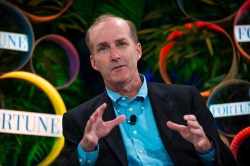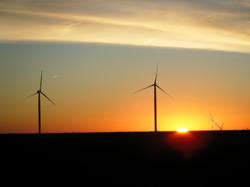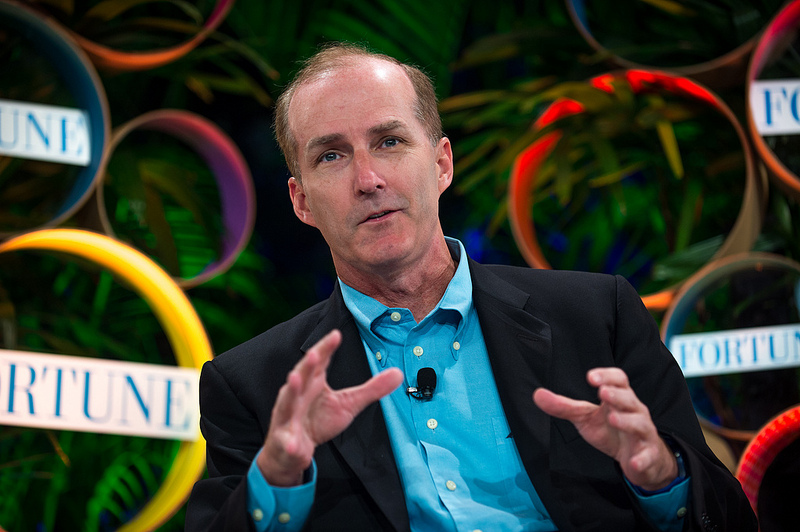
Fortune Live MediaDavie Crane of NRG Energy.
I’ve been going to climate and energy conferences for a long time, and I’ll be honest, it’s been a while since I’ve heard anything new. Or, uh, interesting.
But I heard just such a thing yesterday at the Bloomberg New Energy Finance Summit that I’m attending in NYC. (I’m on a panel today at noon Eastern, FYI.)
It came from David Crane, the CEO of NRG Energy, one of America’s biggest energy companies, which owns several power subsidiaries and a couple of utilities. Under Crane’s leadership, NRG has moved aggressively into clean energy — including distributed solar, as I wrote about a few weeks ago.
Crane is, unlike many utility types, a big believer in distributed energy. He said yesterday that the whole approach of covering vast swathes of desert in solar panels and piping the energy hundreds of miles through high-voltage transmission lines “was stupid in 2008 and it’s stupid today.” Rather, the key advantage of solar is that it can cover houses and buildings and car parks and other urban structures, enabling them to generate their own power.
What this means, Crane said, is that solar and wind, which have seen themselves as natural allies, are about to “part ways.” Wind needs transmission and solar doesn’t.
Instead, solar needs allies that will help it help customers generate and manage their own power and become energy independent, or at least more resilient against grid failures.
Among those allies will be energy management companies — as Crane said this, he was on stage with the CEO of Nest, the company that makes those cool thermostats. Nest recently struck a deal with NRG (and several other utilities) to help get its product into more homes.
But — and here’s the interesting part — among other allies of distributed solar, says Crane, will be … wait for it … natural gas. Why? Because solar homeowners will need other generation sources when the sun doesn’t shine. The top candidate for that role: natural gas microturbines.
Crane noted that natural gas prices have plunged in recent years. However, average citizens have seen very little benefit, because for the most part (excluding those who have natural gas heat), natural gas only reaches them through intermediaries — manufacturers and electrical generators — who pocket most of the extra value. Crane thinks natural gas should “disintermediate” and pipe directly into homes for microturbines. That way homeowners will harvest the savings of cheap natural gas and make themselves more independent from crappy grids. (Crane noted that there are 130 million wooden utility poles in the country; “the economy of the 21st century should not be based on wooden poles.”)
So … solar and natural gas are natural allies in the development of distributed energy. Interesting, right? I don’t know if I’m totally ready to endorse it. Obviously I’d much rather biogas or something more renewable play that supporting role. But in the near term, there aren’t many alternatives to natural gas in that space. And anything that accelerates distributed energy is good for me.
At least it made me stop short and ponder, and it’s been a while since a conference has done that. What do you think about it?



